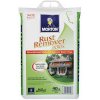If you were attempting to reclaim iron fouled resin instead of replacing it, you would stop the regeneration but you are simply cleaning your resin so it doesn't get iron fouled, so I didn't need to mention it.
Using SIO in the salt tank has been "cleaning" your resin. And so far you've shown no need to have to sanitize the resin now, and doing so harms resin. You also don't have stop the regeneration to sanitize a softener. That's because of the length of time of the slow rinse/brine draw position.
Thanks Gary,
I forgot to mention that I have only been using/adding the SIO for the past year. My 1.0 cu ft softener has been operating since 2005 so it went six years before I started using SIO. That's why I thought I should do a more thorough cleaning. Because I don't know what the current state of the resin is, and whether it is fouled or not. I ended up doing the resin cleaning first, and will sanitize next. I used a cup of SIO and dissolved it in a gallon of softened water. I poured it directly into the brine well and did a manual regeneration.
If I were concerned about ever having breached my softener's capacity, and wanted to make sure that the resin has been fully regenerated, would I need to do two, back to back regenerations? I assume that the salt dose setting (proper terminology?), which my Fleck 7000 is currently programmed for (thanks F6Hawk for calculating that for me), is more than adequate at 16.5 lbs per regeneration to fully restore the capacity of 1.0 cubic foot of resin. So, can I assume that doing two, back to back regenerations, will fully restore the capacity? If so, then my next maintenance procedure will be to sanitize the resin, since this has never been done, and because I have had pink/red staining at the toilet bowl water line. I would just feel better to know that it has been sanitized and that any bacteria in the resin has been removed. I will add one cup of unscented bleach to a gallon of conditioned water and pour it into the brine well? or brine tank? or both?, and then initiate a manual regeneration. I will then follow up immediately with a second manual regeneration, in order to fully rinse the bleached resin and to fully regenerate the resin's capacity. Would this be the correct/preferred method?
Should I check the pH as stated here
http://wqa.org/pdf/educ/webinars/RESIN_SANITIZING.pdf ? It says to check the effluent pH. I have a Hach pH test kit, where would I test for "effluent pH"? Pre or post water softener? FYI my raw water test, done 4/15/12, shows 6.6 for raw water and 7.0 post conditioning. I have a pH neutralizer installed prior to the softener. I am concerned that the raw water pH may have changed since April. I understand that the neutralizer "should" raise the pH level to one which would be safe to use with bleach, but would like to know for sure. Could I test the pH of the water coming into the brine tank by manually changing the valve to the brine fill cycle and capturing some water coming out of the brine line? I wish I had installed a 3/4" full port drain valve after my AN tank, this would have made for easy testing.
Lastly, any recommendations out there on where to purchase a replacement BLFC, injector, and DLFC (do I need to change this also? where is it?) would be greatly appreciated.
Thanks for all the responses and opinions. Have a good day.


